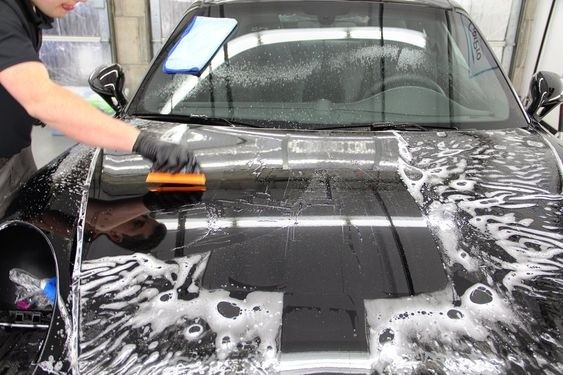
30 Oct 2024
How Paint Protection Film Works: Thorough Literature Review
Keeping a vehicle fresh and as a new one is a goal for every car owner that is why cleaning services are popular. Paint protection films, commonly abbreviated as PPF, may be among the most effective ways of shielding a car’s exterior. This is an advanced feature because it helps to protect the vehicle’s paint work from the various forms of abusing it. In this detailed article we will look at the functionality of paint protection film and why having it is crucial for car lovers. Get our PPF Dubai services now.
Explaining Paint Protection Film
Paint protection film or popularly known as PPF is a kind of thermoplastic urethane material that is laminated on the painted surfaces of a vehicle. While it was created with the military in mind, it has transitioned to consumer and business use providing a shield that is virtually unseen on automobiles, trucks, motorcycles, and other vehicles.
How Best Paint Protection Film Works?
1. Composition and Structure:
PPF is made of several steps which have different objectives, explained below. The outer layer is usually constituted by an elastomeric polymer so that the film adhere to have properties of self – healing for slight scratch and abrasion. Below this is the urethane layer which is the firmness and the strength of the whole film. It also guarantees that the film is well cemented to the complexion of the car without leaving any scratch on the paintwork.
2. Application Process:
Paint protection film application involves a lot of work which for that reason needs a professional touch. The surface of the vehicle is washed and prepared to guarantee proper adherence of the product to the automotive item. The film is then correctly applied, and it generally involves the use of heat and pressure so that it fits the curves of the vehicle. When done by professional workers, the bubbles are got rid of and smoothness is attained using some specific tools.
3. Self-Healing Properties:
Another very attractive characteristic of PPF is its ability to self-heal. The minor scratches and swirl marks can wipe out when the film comes across heat such as sun or hot water; he explained further. This is because of the elastomeric polymer layer where it can be bent and return to its normal state and the surface will always be smooth and clear.
4. UV Resistance:
Prevalent on such surfaces, PPF gives immense UV protection that prevents paint from fading due to sun exposure. It also assists in preserving the vehicle's color and the surface of the finish so as not to be affected by the damaging ultraviolet light.
5. Impact Protection:
PPF functions as a shield against different kinds of physical harm. It can shield from stones, and other elements on the road, minor scratches, and even acts of vandalism. It also takes the force which does not affect the underpaint thereby not scratching or chipping it.
